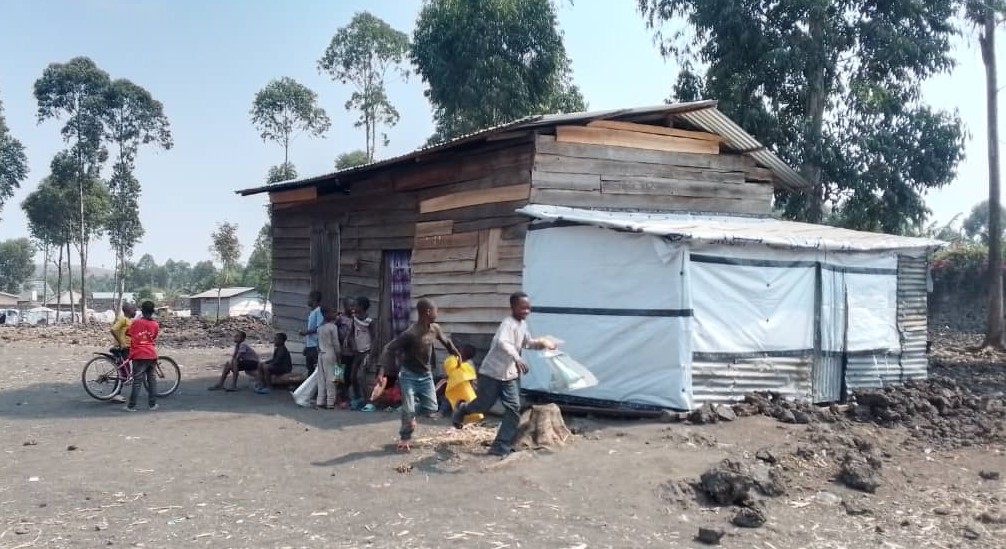
The Educational Crisis in the Context of War
The educational problem of refugee children in Goma who spend three years without going to school
With two weeks to go before school activities resume in different regions of the world, many displaced and refugee children will still not have a chance to see the school wall this year. Some even have no recollection of what school is like, they have even forgotten the smell of school walls, the smell of new notebooks and uniforms, and especially this usual morning rhythm of building their future. For them, going back to school today seems like a utopia.
In the past few days, while visiting some refugee camps around Goma, out of curiosity, I talked to the children and adolescents living there, many for more than three years. All of a sudden what comes out of their eyes and their words is a great concern, a lack of hope, because all they can talk about anymore is the war and the suffering they are going through in these camps. A terrible crisis of hope.
It is sad to see children who no longer feel that excitement to start a new school year, just because they are forced to live the sad reality that they did not choose and in which they find themselves with multiple “why” questions. Why did we end up in these camps? Why can’t we go to school normally like other children our age?

War and armed conflict have devastating impacts on societies, and one of the most severely affected sectors is education. What we observe in Goma (Democratic Republic of Congo) is a crossroads of thousands of refugees and internally displaced persons-it is dramatic. With the resumption of conflicts, which have caused massive population displacements, there are now thousands of children and adolescents who have not set foot in school for three years. In this context, the need for works of mercy emerges strongly.
For decades, this region has been the scene of armed violence, forced displacement and chronic political instability, mainly affecting the educational system. Among the victims of this crisis are refugee children who find themselves deprived of their basic right to education.
According to UNICEF, more than 1.5 million children in the eastern part of the Democratic Republic of Congo are displaced by conflict around Goma. Access to education in these camps is extremely limited, if not nonexistent. The few schools we do find are often overcrowded, poorly equipped, and lacking in infrastructure and qualified staff.
Refugee children’s educational challenges
The prolonged interruption of education for displaced children poses complex educational challenges. First, after several years without going to school, these children lose basic skills in reading, writing, and math. The loss of these basic skills makes returning to school extremely difficult, as they not only have to catch up, but also relearn the skills they have already acquired.
In addition, refugee children are often traumatized by the violence they have been exposed to. This trauma has a direct impact on their ability to learn. Studies show that children who have experienced traumatic events have difficulty concentrating, memory problems, and are more likely to suffer from emotional and behavioral disorders. In an environment where psychological resources are limited and almost nonexistent, it is extremely difficult for teachers to meet the specific needs of these children.
In addition, living conditions in refugee camps do not promote an environment conducive to learning. Overcrowding, lack of materials and perpetual insecurity create a climate of uncertainty that prevents children from focusing on their studies. In addition, parents, often themselves traumatized and concerned about daily survival, are not always able to support their children in their education.

What possible responses to the educational crisis?
Responding to the educational crisis of displaced children requires consideration of multidimensional solutions. First, immediate access to education should be restored for refugee children. This requires not only the construction of temporary schools in refugee camps, but also the training of teachers capable of handling heterogeneous classrooms and responding to the specific needs of traumatized children.
Second, it is imperative to provide psychosocial support to displaced children. This includes training teachers in trauma management, as well as establishing psychological support programs in schools to help children overcome traumatic experiences and regain the ability to learn.
In addition, the international community and nongovernmental organizations must step up efforts to support education in conflict zones. This includes not only funding educational infrastructure, but also ensuring that educational policies include specific measures for displaced and refugee children. It is also important to involve local communities in the educational response. Parents, community leaders and the children themselves should be consulted to identify specific needs and solutions best suited to their context.
Images
- Rodrigue Bidubula
